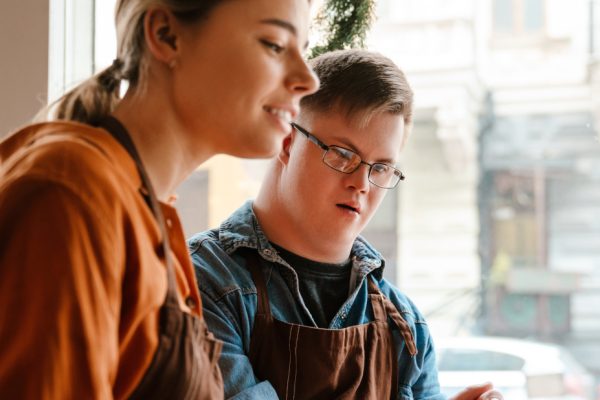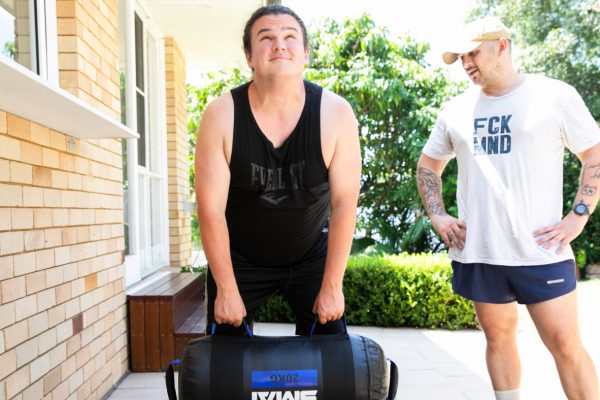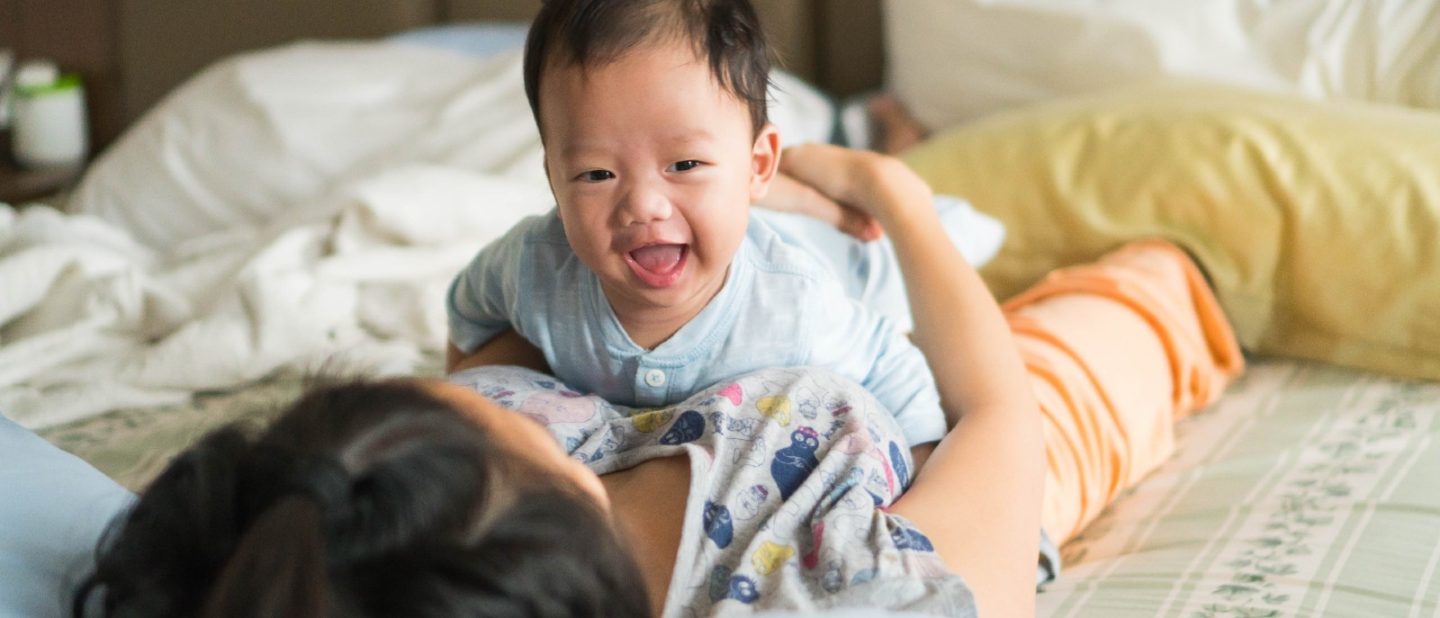
Fun activities you can do at home to help developmental milestones
By Allowah
Many activities that kids naturally enjoy are inherently building and developing their skills. Many of these activities are more complicated and involve more skills than we give them credit for.
Take for example playing with Duplo type bricks. This activity is actually quite complex and offers many opportunities for developing skills such as grasp, in hand manipulation, identification of objects by colour, size and shape. It builds muscle strength, teaches perseverance and patience and social skills like sharing if done with siblings or even parents! This fun and simple activity is building many skills and providing “building blocks” (pun intended!) for the future skills required for other tasks such as handwriting, and dressing. The therapists at Allowah Children’s Hospital and Disability Support Services have compiled a list of activities you can do with your child at home, to assist their development.
OCCUPATIONAL THERAPY – IDEAS FOR SKILL DEVELOPMENT
1) Messy Play
Skills in focus – fine motor skills (including grasp, manipulation, and muscle strength), hand eye coordination, spatial awareness, body awareness and much more.
Activity ideas – playdough (making your own with your child provides even more opportunities for skill development); rice play (fill a tray or container with rice and hide objects in it for your child to find, get out cups and spoons and bowls so they can tip and pour); playing with slime and shaving cream (hide things in it, draw pictures, letters, or numbers in it).
2) Construction Play
Skills in focus – fine motor skills, planning skills, patience, perseverance, problem solving and hand eye coordination. Activity ideas – building and stacking with blocks or plastic cups; building towers, buildings and cars out of old cardboard boxes; Lego or Duplo; Jenga; building a blanket cubby house, or putting together a train set.
3) Art and craft
Skills in focus – fine motor skills, planning skills, hand eye coordination, muscle strength in fingers, hands, arms and shoulders; attention and concentration. Activity ideas – drawing and painting on different surfaces (such as table, floor, wall or easel) will strengthen different muscles; using scissors to cut through different materials (e.g. paper, cardboard, playdough); painting with different objects (e.g. cotton balls, cotton buds, fork, bubble wrap); making creatures, people or places out of recycled materials such as egg cartons, cardboard boxes, milk bottles or magazines.
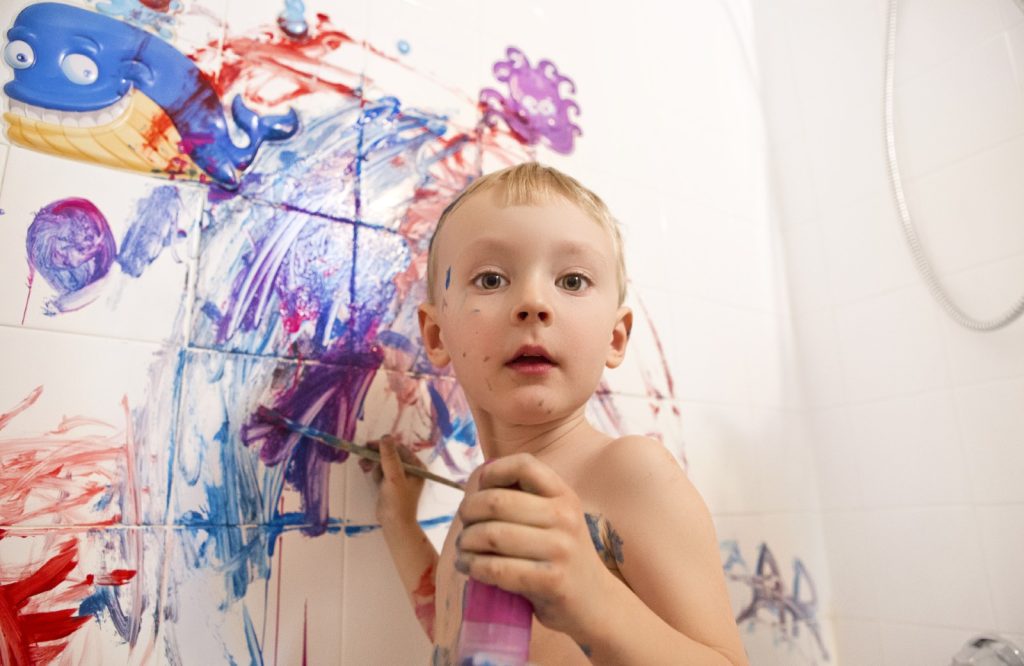
4) Imaginative play
Skills in focus – fine motor skills, dressing skills, creativity, problem solving, and social skills (turn taking and sharing).
Activity ideas – playing farms, doctors, vets, schools, shops, or zoos; pretending to go on camping trips, safaris, underwater explorations, or outer space adventures. Your child can use the resources you have at home to create costumes, buildings, maps, food, storylines and more to fit the theme they have chosen.
5) Structured play
Games with rules and instructions to follow. Skills in focus – social skills (turn taking, sharing), fine motor skills, rule following, patience and problem solving.
Activity ideas – card games or board games – like matching or snap; Simon says; musical chairs or cushions; puzzles; sorting and matching games.
PHYSIOTHERAPY – IDEAS FOR SKILL DEVELOPMENT
1) Tummy time
Method: Parents recline on their back with baby’s tummy on their stomach, baby’s head facing parents. When the parent talk to their baby, they will try to push their arms and lift their chest and head up and look at parent face.
Benefit: Tummy time gives babies an opportunity to try an alternative position and helps to prevent them from getting a flat head syndrome from lying on their back for a long period of time. Also, it helps to strengthen baby’s head, neck, arms and upper body. Furthermore, it helps to develop their gross motor skills to assist other motor movements like creeping, crawling.
2) Roll over exercise
Method: Parent can place a toy on one side to encourage babies to roll toward it. Babies may feel difficult at the first few attempts, parent can provide assistance on their hips and shoulders to assist the roll. Once babies develop their neck, back and core strength, they will start rolling from supine-to-prone and prone-to-supine independently. Benefit: This exercise is good at strengthening babies’ neck, upper, and lower back muscles. Also, it helps improve body posture.
3) Sit-ups
Method: Parent holds babys’ arms and pulls them slowly from a lying position into a sitting position. Parent can start with a small degree of movement, such as pulling from lying to a 45 degrees recline position. Benefit: Babies will naturally flex their core muscle and further flex their neck to keep their head in alignment with their body in the sit-ups exercise. Therefore, it is a good exercise to strengthen babies’ shoulders, core, arms, and back.
4) Sitting
Method: Parent can place the baby on their lap to maintain a seated position. When babies developed more strength and control in their trunk and neck muscles, parent can prop them up to a sitting position on the floor and put toys in front of them.
Benefit: Sitting is a great exercise to practice balance, improve postural control, as well as strengthen neck and trunk muscles. Also, it is very important for the next gross motor milestones, which are sit-to-stand, standing and walking.
5) Stand up practice
Method: Parent can place a toy on the couch to encourage babies to pull the couch to stand and reach the toy. At first, parent may need to provide assistance on their hips to perform the movement. When babies gain more confidence and have more legs strength, parent can reduce support and let them do it independently.
Benefit: Stand-up practice is an excellent exercise to increase muscle strength in babies’ legs. Also, it encourages babies to weight bear on their legs.
SPEECH THERAPY – IDEAS FOR SKILL DEVELOPMENT
1) Cause and effect activities
Using light up toys and push buttons to activate an action. This can be used to target functional language such as requesting for ‘more’, ‘yes’, ‘no’ and ‘finished’.
2) Sensory toys
These can be made at home, for example sensory rice by dyeing rice in a variety of colours, playdoh or creating a sensory board with pompoms and other craft items of various colours and textures. This can be used to introduce basic concepts such as colours, shapes, textures and sizes to children.
3) Reading books
Introducing touch and feel books and basic picture books. Point out pictures, colours, shapes, actions instead of reading words to encourage language development. Ask ‘wh-‘ questions, such as who, what and where, to build their understanding of these concepts.
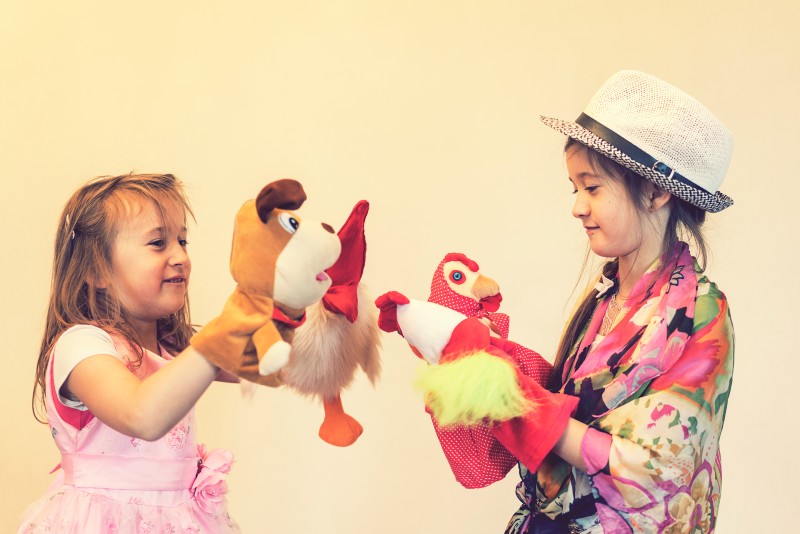

4) Pretend play
Using puppets, dolls, stuffed animals, imitate functional actions such as eating, brushing hair, playing, jumping and other actions to build an understanding of these concepts and encourage functional play.
5) Nursery rhymes
Sing nursery rhymes with accompanying actions such as, ‘open, shut them’ and ‘round the garden’. This reinforces language through their repetitive nature and pairing words with actions. It targets a variety of language concepts such as verbs and names, whilst encouraging eye contact and social engagement.
For more than 60 years, Allowah Presbyterian Children’s Hospital and Disability Support Services has been supporting children with complex disabilities and medical needs providing a huge range of supports, including short stay accommodation (respite), after school care, holiday programs, mid-week adventures, therapy and early intervention.




